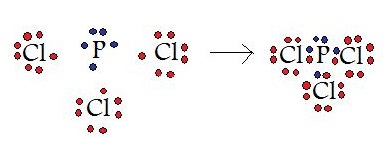|
#1
January 28th, 2017, 11:48 AM
| |||
| |||
| NICL Ionic or Covalent
Hi I would like to have the details about the Iconic Bonding as well as the Covalent Bonding and also the structure of the bonding of Nickel (II) chloride? There are many sorts of substance bonds and strengths that quandary particles together. The two most essential sorts of bonds are portrayed as either ionic or covalent. In ionic holding, iotas exchange electrons to each other. Ionic bonds require no less than one electron giver and one electron acceptor. Interestingly, molecules with a similar electronegativity share electrons in covalent bonds, in light of the fact that neither iota specially pulls in or repulses the common electrons. Iconic Bonding Ionic bonding is the total exchange of valence electron(s) between particles. It is a sort of substance security that creates two oppositely charged particles. In ionic bonds, the metal loses electrons to end up distinctly a decidedly charged cation, though the nonmetal acknowledges those electrons to end up distinctly a contrarily charged anion. Ionic bonds require an electron giver, regularly a metal, and an electron acceptor, a nonmetal. In ionic holding, more than 1 electron can be given or got to fulfill the octet run the show. The charges on the anion and cation relate to the quantity of electrons gave or got. In ionic bonds, the net charge of the compound must be zero. Covalent Bonding Covalent bonding is the sharing of electrons between iotas. This sort of holding happens between two molecules of a similar component or of components near each other in the intermittent table. This holding happens principally between nonmetals; nonetheless, it can likewise be seen amongst nonmetals and metals. On the off chance that molecules have comparative electronegativities (a similar proclivity for electrons), covalent bonds are well on the way to happen. Since both particles have a similar partiality for electrons and neither tends to give them away, they share electrons with a specific end goal to accomplish octet setup and turn out to be more steady.  Bonding in Organic Chemistry Ionic and covalent bonds are the two extremes of bonding. Polar covalent is the middle of the road kind of holding between the two extremes. Some ionic bonds contain covalent qualities and some covalent bonds are somewhat ionic. For instance, most carbon-based mixes are covalently fortified however can likewise be incompletely ionic. Extremity is a measure of the division of charge in a compound. A compound's extremity is reliant on the symmetry of the compound and on contrasts in electronegativity between particles. Both of these bonds are imperative in natural science. Ionic bonds are imperative since they permit the combination of particular natural mixes. Researchers can control ionic properties and these associations keeping in mind the end goal to shape sought items. Covalent bonds are particularly essential since most carbon particles connect fundamentally through covalent holding. Covalent holding permits atoms to impart electrons to different particles, making long chains of mixes and permitting more many-sided quality in life. Nickel (II) chloride (or just nickel chloride), is the chemical compound NiCl2. NiCl2 adopts the CdCl2 structure.[7] In this motif, each Ni2+ center is coordinated to six Cl− centers, and each chloride is bonded to three Ni(II) centers. In NiCl2 the Ni-Cl bonds have "ionic character". Yellow NiBr2 and black NiI2 adopt similar structures, but with a different packing of the halides, adopting the CdI2 motif. Last edited by Neelurk; March 25th, 2020 at 04:33 PM. |